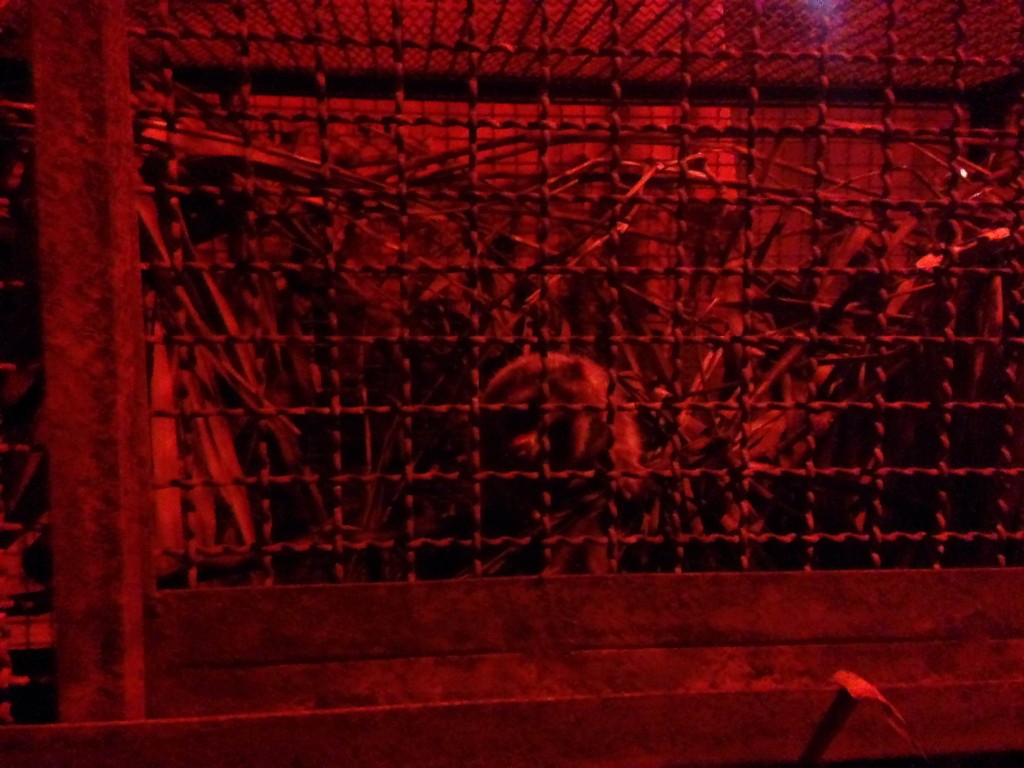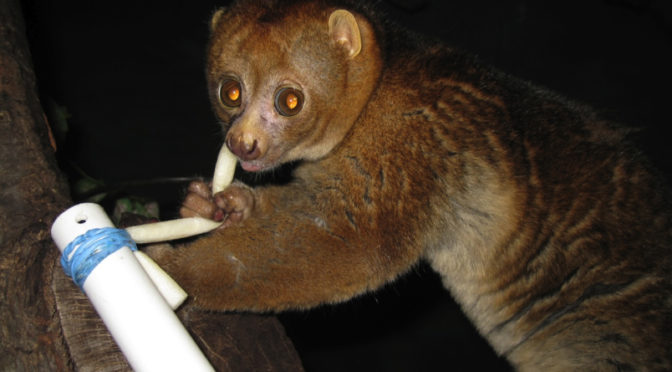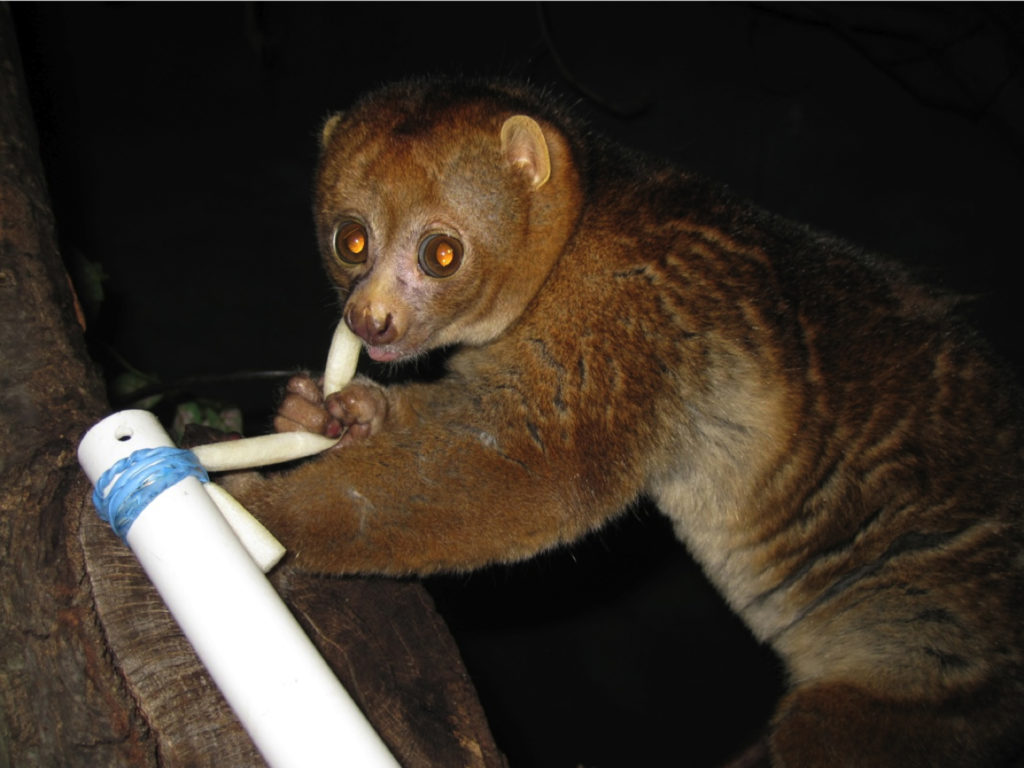Today’s SLOW blog comes from former Little Fireface Project postdoctoral research Grace Fuller, who is now Manager of Applied Animal Welfare Science at the Detroit Zoo. Grace lets us know a bit why our little gremlins don’t like bright lights – and how we can give night lights to nocturnals!

Have you ever wondered why there is a blue-light filter on your cell phone? Evidence is mounting that artificial lighting can disrupt biological clocks in humans and other animals, and the American Medical Association recommends avoiding light exposure before bedtime—particularly blue-shifted wavelengths from cell phones and other LED screens. The retinal cells that communicate with the body’s biological clock are particularly attuned to blue wavelengths, and exposure to blue light at night can throw off biological rhythms by altering signals from melatonin and other hormones. The effects of these changes can be dramatic for health, reproduction, and behavior.
The Nocturnal Eyes Have It
Nocturnal primates have sensitive visual systems highly adapted for foraging and traveling in darkness, and, therefore, may be particularly susceptible to negative effects of nighttime light exposure. Nocturnal primates also have retinas that are dominated by rod cells, which respond more strongly to blue than red light. Existing evidence, therefore, suggests that exposure to blue light could have deleterious effects for nocturnal primates, but until recently, this idea had not been tested.
With my collaborators at Cleveland Metroparks Zoo and Case Western Reserve University, I decided to see how lighting conditions affect the welfare of nocturnal primates living in the care of humans. Zoos typically house nocturnal animals on reversed light cycles, meaning that animals are exposed to bright white light at night (to simulate the “day”), and they are exhibited under dim lights during our day (their “night”) when zoo visitors can observe them. These dim “night” lights are usually red or blue, to give the appearance of moonlight.
Testing the Impact of Light
We experimentally compared behavioral profiles and salivary melatonin concentrations in nocturnal primates at three zoos. The species we studied included pygmy slow lorises, Moholi bushbabies, pottos, and a single aye-aye. In each case, we experimentally changed the “nighttime” exhibit lighting from red to blue (or in one case, from blue to red), and then back to the baseline color. The results varied somewhat by species and location, but in general, the animals demonstrated higher activity levels when their exhibits were illuminated with red than blue lights. In red light, the primates spent more time moving around their enclosures and investigating their surroundings. They also had higher melatonin levels living under red light compared to blue, and melatonin levels decreased at higher light intensities.
Taken together, our results confirmed that our nocturnal subjects showed fewer behavioral and physiological impacts of exposure to night lighting when red lights were used compared to blue. Our results are preliminary given the number of subjects and zoos involved. But they support the idea that when it comes to night lights for nocturnals, red is best.
Grace Fuller, Ph.D.
Manager of Applied Animal Welfare Science
Center for Zoo and Aquarium Animal Welfare and Ethics
Detroit Zoological Society
Grace also recently interviewed our director Prof Anna Nekaris for the American Society of Primatologists Primate Welfare Hot Topic, which you can read here!
Fuller, G., Raghanti, M.A., Dennis, P.M., Kuhar, C.W., Willis, M.A., Schook, M.W., and Lukas, K.E. (2016). A comparison of nocturnal primate behavior in exhibits illuminated with red and blue light. Applied Animal Behaviour Science, 184, 126-134


